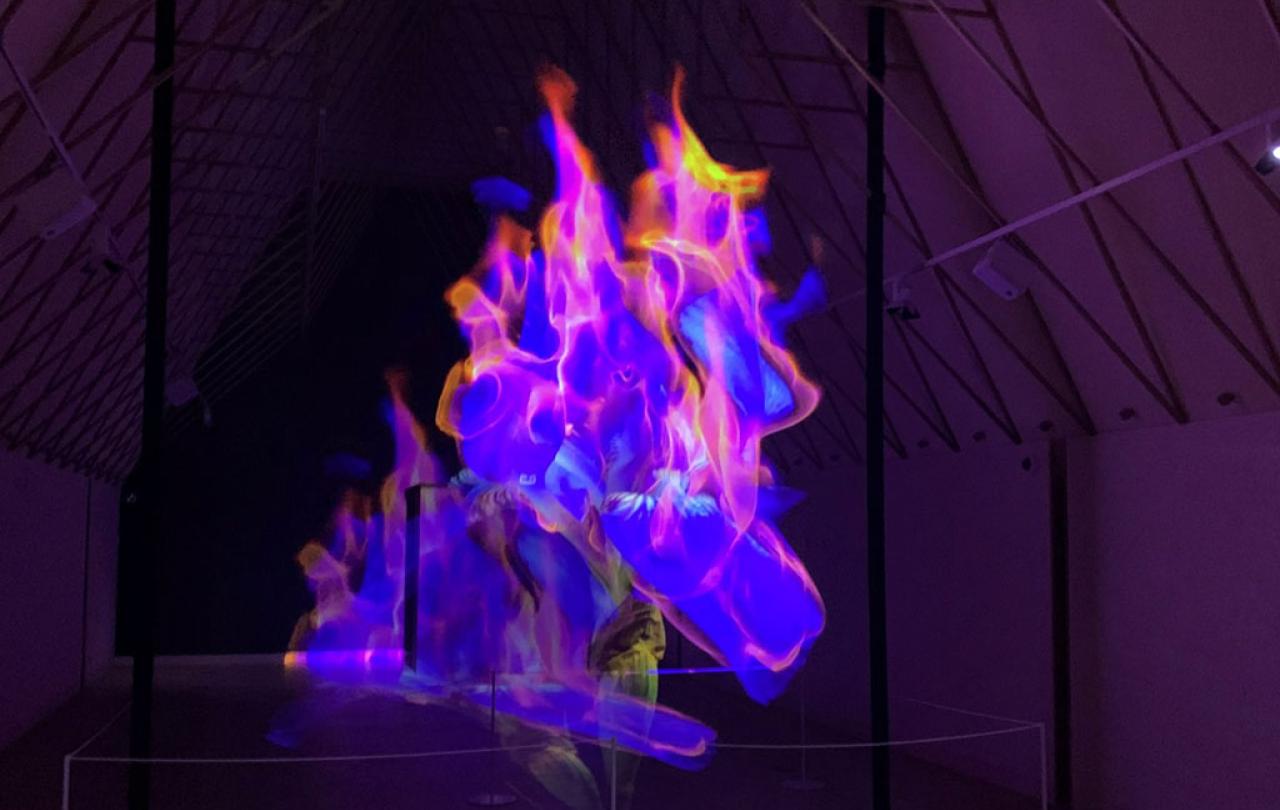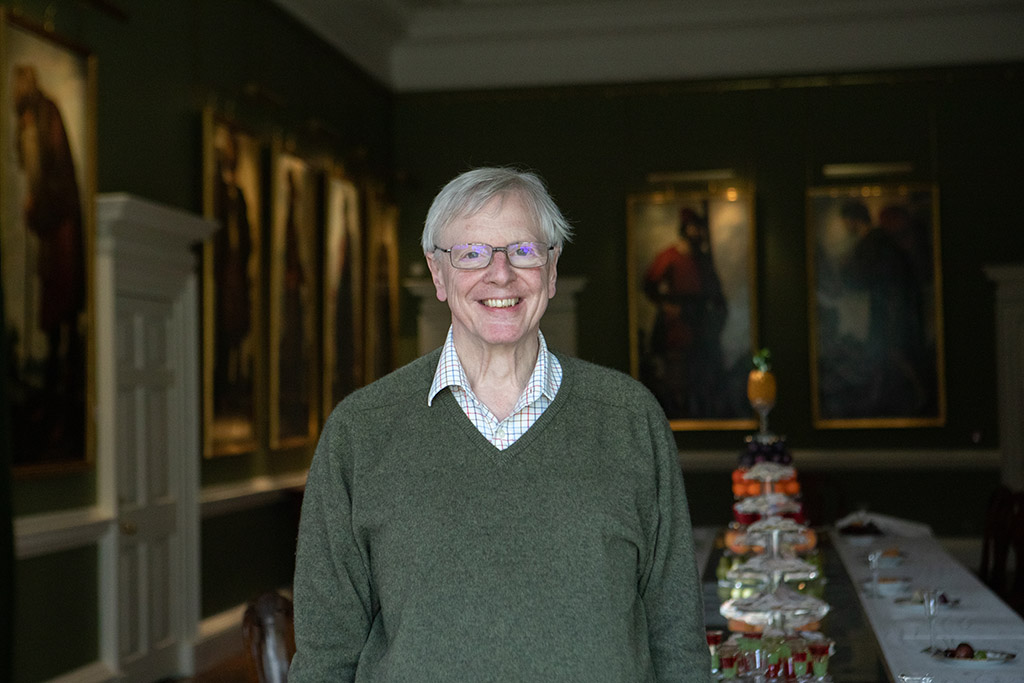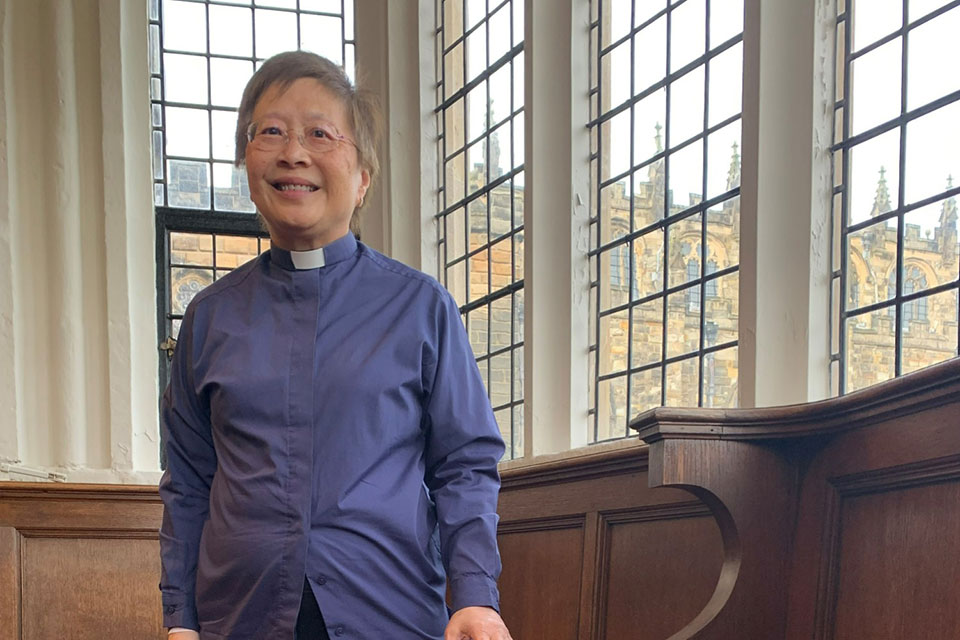Among the advisers on the museum’s establishment was Eileen Harrop, a Church of England priest originally from Singapore and of Chinese origin. She was appointed an “entrepreneur priest” in 2016 to work with Ruffer on The Auckland Project. Meeting in the castle’s former library, she says the museum avoids suggesting all faiths are the same, while also steering clear of Christian proselytising. Harrop, now the vicar of four parishes around Bishop Auckland, expects the museum to have a powerful effect on visitors.
“It allows for people to experience the God who led Jonathan here,” she says. “It allows for people to enter into all the different ways in which people can identify something about faith and then it’s up to God.”
A visit’s emotional impact comes largely from the new institution’s first floor, devoted to works created by contemporary artists exploring faith. Some of the most powerful exhibits are black-and-white pictures in which Khadija Saye, a young British-Gambian artist, explores possible uses for religious objects belonging to members of her family, some Muslim and some Christian. Saye lost her life in the 2017 Grenfell Tower fire.
A series of works by Christian painter Roger Wagner has proved particularly timely. The museum opened the same day that Hamas terrorists started the current Israel-Gaza war with their attack inside Israel. The paintings translate stories from the Christian New Testament to the contemporary, riot-scarred occupied West Bank.
Eidolon is among the works on the first floor. Harrop calls it an “amazing installation”, particularly for its retelling of the story of Daniel.
“It relates a story… of what was going on in that particular experience of the faithful person called and protected with his companions in relation with God and the power of faith,” she says.
Ruffer, meanwhile, shies away from expressing spiritual aspirations.
Asked how he hopes people will respond to the museum, he says: “I couldn’t care less – that’s up to them. I have many faults but a sense of wanting to tell people or persuade people how they should be is very low down the list.”
Yet Ruffer is clear that he received a clear, divine call to come to Bishop Auckland. He was first drawn to the area by his enthusiasm for Spanish art and his determination to prevent the Church of England’s Church Commissioners, then owners of the castle, from selling its prize artworks – life-size, 17th century portraits by Francisco de Zurbarán known as Jacob and his 12 Sons. The paintings, saved for Bishop Auckland in 2011 by a multi-million-pound donation by Ruffer, remain in the castle. But the Zurbarán link inspired Ruffer to establish a Spanish Gallery, dedicated to art from Spain, on Bishop Auckland’s Market Place.
“I came here really through a calling,” Ruffer says. “I felt the need really to drop everything and come up to somewhere in the north-east, to be part of a community.”
Ruffer’s engagement with the town deepened when the Church Commissioners announced, also in 2011, that they planned to sell the castle. Auckland Castle was formerly a seat of both ecclesiastical and secular power when the Bishops of Durham were prince-bishops – uniquely in England, both secular governors and bishops. The bishops lost the last of their secular powers in 1836. Ruffer bought the castle and transferred ownership to a newly established Auckland Castle Trust, which became The Auckland Project.







